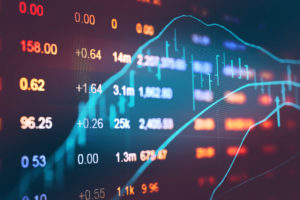Market Update 22nd April 2024

Forever in your debt
Recent meetings and articles have piqued my interest in emerging markets (EMs) and a potentially underappreciated way to invest in them. EMs have always been seen as a high risk and high volatility asset class, but as they have matured it is debatable to what extent this is still the case. Volatility in EMs has come down and has actually been lower than Developed Markets (DMs) recently. In 1990, EM equity was 1.75x the volatility of the Developed Markets (DMs) equity, but this has fallen over the past three decades and it is now pretty much in line. Last year it was 4% lower than the DM index. There are a few reasons for this. EMs have developed higher governance standards and have become integrated with the global economy. As a result, they have benefited from rising liquidity – which further enhances their appeal.
Many portfolios nowadays have some form of allocation to EM. This is for two main reasons. There are excellent investment opportunities in these countries, and an allocation brings diversification (EMs have a lower correlation with other equity markets, usually around 50-60% correlation to the US, while European indices usually have around 70-80% correlation to the US).
This allocation is usually into equities, but EM debt as a sub-asset class has been getting some positive attention in recent years. The Bloomberg EM Hard Currency Aggregate index has a 1-year performance of 6.92% vs the Bloomberg Global Aggregate 1-year number of -1.44%.
One reason EM debt has been popular over the last few years is that many EMs are at a different point in their inflation and rate cycle. EMs were quicker to hike rates, and have therefore seen inflation come down. Some have even been cutting rates, like Brazil and Colombia. Another point is that in contrast to DMs, emerging economies used relatively little QE and therefore aren’t left dealing with its hangover.
That’s not to say investing in EMs is without risk.
There are, as one might imagine, several factors to contend with. Political situations can be less stable than in DMs, so geopolitics plays heavily into EM, both for equity and debt. That said, usually a lot of geopolitical risk is priced into EM debt already and investors are aware of this risk.
Another major factor is currency. EM currency can be volatile. When a currency devalues, this can accentuate losses, or limit local currency gains. The opposite can also be true, some investors use local currency options to access potential gains via the currency appreciating. There are, however, usually plenty of US (the most common hard currency used) options. This can transfer the currency risk to a generally more stable one, and so can bring extra stability. It can also lead to higher credit ratings.
Diversification is key in EMD. There are now around 80 countries contributing to the Bloomberg EM Hard Currency Aggregate Sovereign index, however only 19 contributing to the Bloomberg EM Local currency Government index. And within the local currency index there is a significantly lower proportion rated as investment grade. That’s one of the reasons we prefer well-managed funds over simple passives. We also think active management is right for this asset class anyway. It is possible to invest with passive trackers in this space, but many of these options will have issues. In short, replicating a bond index is difficult, and not always cost effective.
When speaking with EM debt fund managers, it is clear they are excited about this asset class and have the recent performance to back it up. Now I’m not saying, ‘let’s put 100% of a portfolio in EM debt’, but I think it can play a good role in portfolios to provide meaningful diversification where appropriate.
Emily Cave – Research Analyst

Hawksmoor Investment Management Limited is authorised and regulated by the Financial Conduct Authority (www.fca.org.uk) with its registered office at 2nd Floor Stratus House, Emperor Way, Exeter Business Park, Exeter, Devon EX1 3QS. This document does not constitute an offer or invitation to any person in respect of the securities or funds described, nor should its content be interpreted as investment or tax advice for which you should consult your independent financial adviser and or accountant. The information and opinions it contains have been compiled or arrived at from sources believed to be reliable at the time and are given in good faith, but no representation is made as to their accuracy, completeness or correctness. The editorial content is the personal opinion of Emily Cave. Other opinions expressed in this document, whether in general or both on the performance of individual securities and in a wider economic context, represent the views of Hawksmoor at the time of preparation and may be subject to change. Past performance is not a guide to future performance. The value of an investment and any income from it can fall as well as rise as a result of market and currency fluctuations. You may not get back the amount you originally invested. Currency exchange rates may affect the value of investments.
View more news
